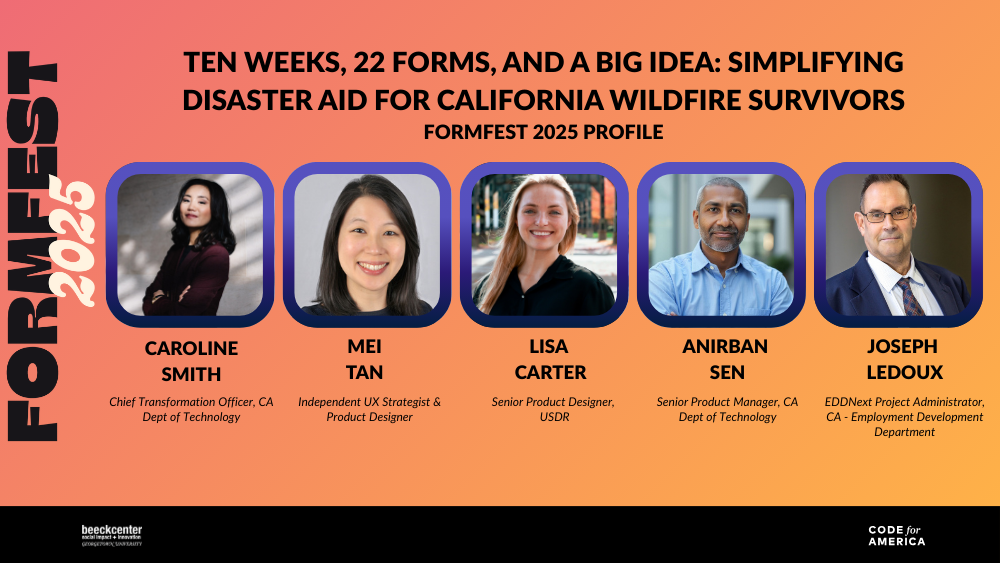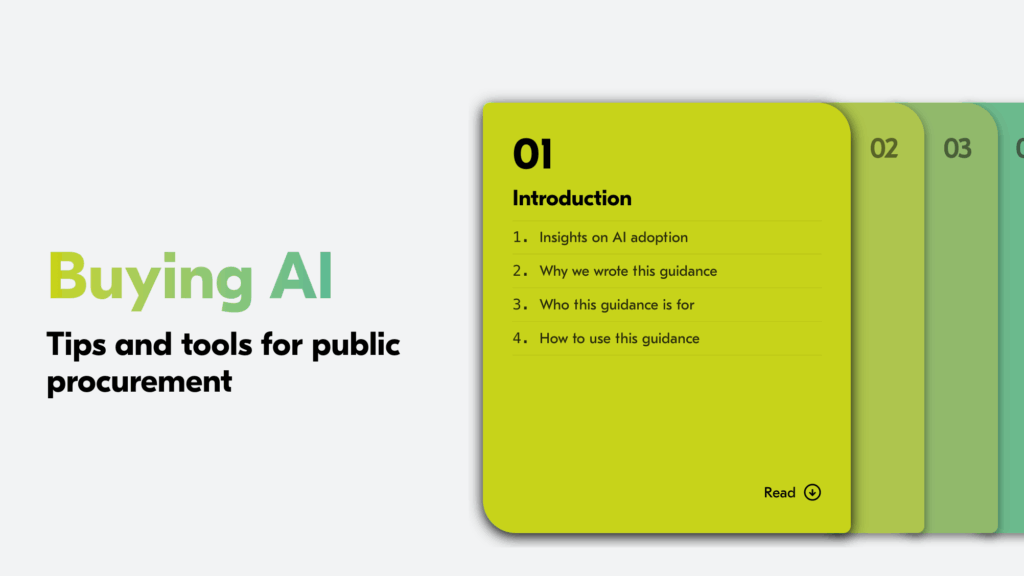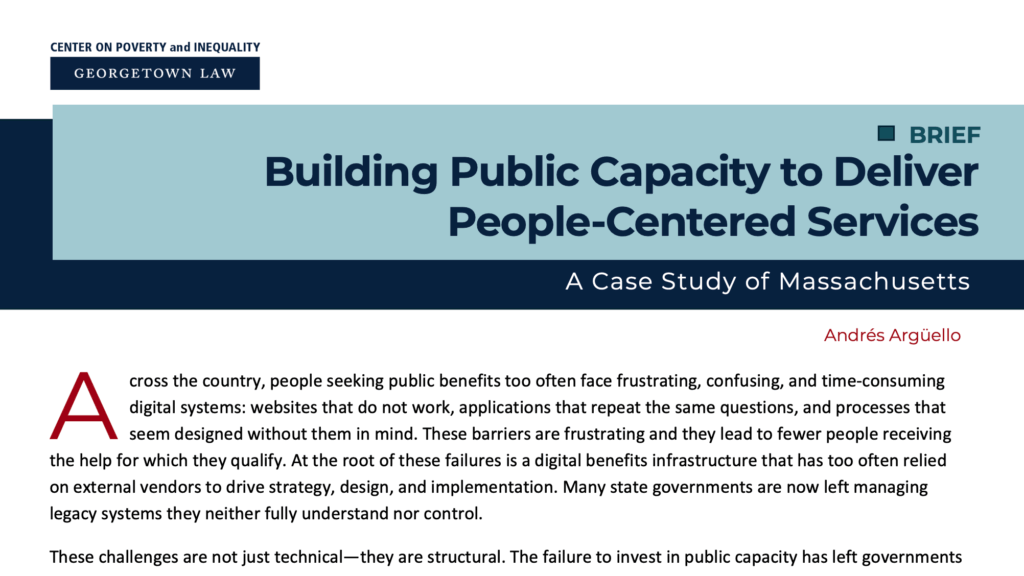FormFest 2024 Recap: All Things Artificial Intelligence
An event recap from one of FormFest 2024’s breakout sessions featuring speakers from the Canadian Digital Service and the National Head Start Association.
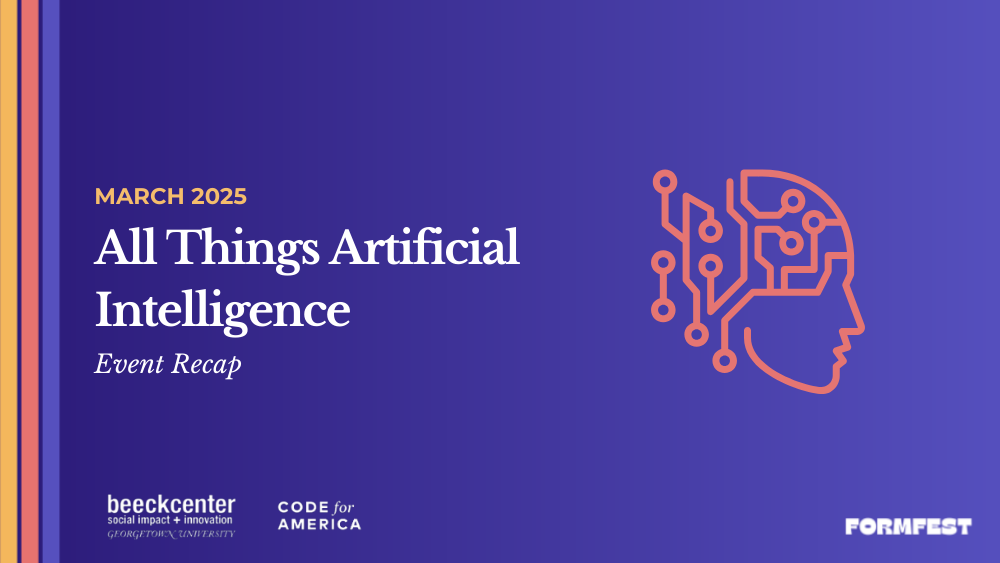
The following sessions from FormFest 2024 focused on the major changes artificial intelligence (AI) is bringing to form design. Participants learned about the National Head Start Association’s use of AI to reduce administrative burden and the Canadian Digital Service’s tips for protecting government application systems from AI.
One Form to Rule Them All: Using AI and Conversational Bots to Streamline Applications to Benefits Programs
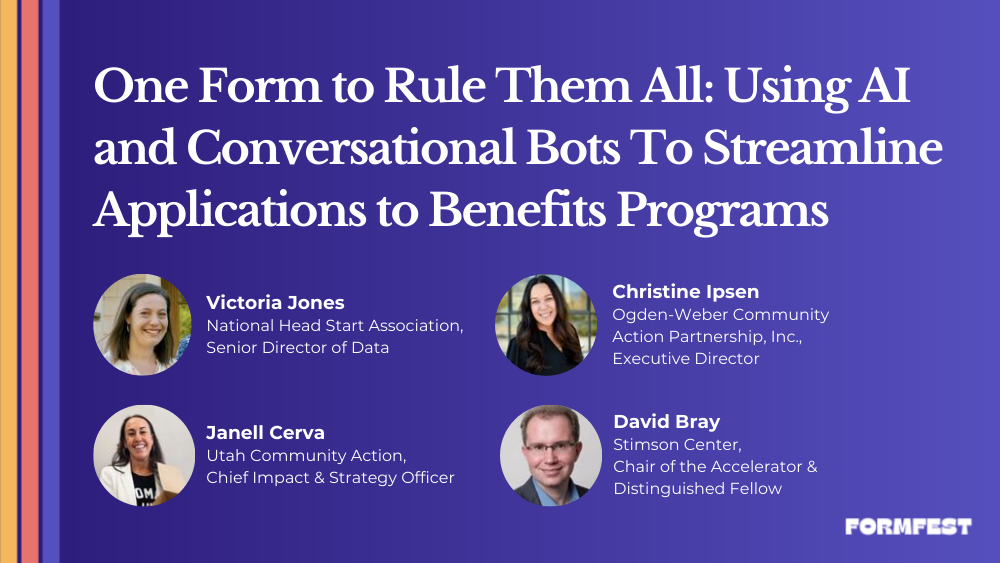
This panel explored efforts by the National Head Start Association (Victoria Jones) and two Utah-based community action agencies (Christine Ipsen and Janell Cerva) to improve their benefits application processes with help from David Bray and his expertise in conversational bots. The project, titled “One Form to Rule Them All,” is in its conceptual stage and aims to use multilingual, conversational chatbots to streamline and improve the application process for both administrators and applicants.
Many families applying for benefits are eligible for multiple programs, but each requires a separate application, making the process tedious and overwhelming for applicants already under considerable stress. To help alleviate this problem, the team is harnessing the power of conversation to improve user experiences. They aim to develop an interactive chatbot that collects data via text and uses it to apply for multiple programs on the applicant’s behalf. This reduces the need for repetitive form submissions and eases the administrative burden placed on both applicants and case managers.
Although still in the conceptual stage, the goal of this project is to better meet clients where they are and streamline data collection for eligibility determination. The team is currently looking to take this project to the development stage and connect with interested partners and funders. In the future, they hope to implement a fully-developed version of this chatbot to improve the process of applying for benefits overall.
Apply.ai — The Next Gen of Form-Filling Applications and Attacks
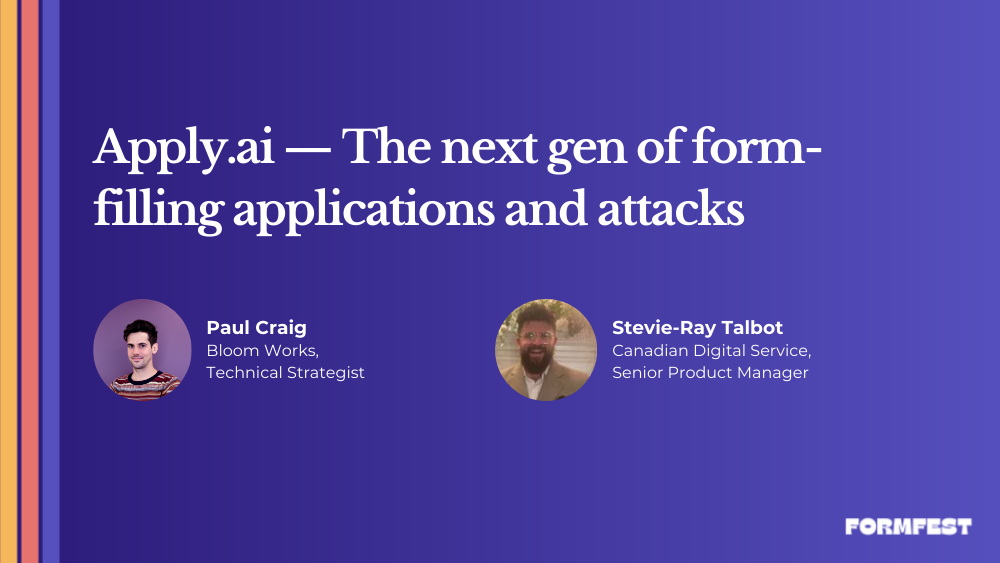
During their session, Paul Craig from Bloom Works and Stevie-Ray Talbot from the Canadian Digital Service tackled two critical questions about AI: (1) how to use AI to improve government services, and (2) how to protect those services from automated attacks. Craig outlined the current state of AI and highlighted that while companies like AI, users are largely ambivalent. Therefore, it is important to ensure organizations are addressing user needs by solving the problems they care about most before implementing AI.
Craig then divided AI services into two categories. The first, which he calls “Generic AI Service,” involves users asking the AI a question, receiving information, and using it to complete a task. With this type of AI, the user ultimately remains responsible for solving their own problem. The second type functions differently: the user provides minimal information, confirms the details the AI collects, and then the AI completes the task on their behalf. Craig refers to this as “Amazing Service AI.” He then demonstrated an example of each type. The first was a general-purpose assistant using its judgement to control a computer and complete a task, while the second was a data entry application using web scripting and AI to complete a task. This second demo, created with code Craig wrote himself, currently serves as the prototype for Apply.ai.
After the demonstrations, Talbot discussed some problems governments might face when trying to secure Apply.ai or other government platforms. He claimed that the top attack to watch out for were injection attacks, where someone indirectly prompts the AI to access a user’s saved data to do something nefarious. For example, an attacker could send an email that features hidden content to a user, which will direct Apply.ai to send data to the attacker. Talbot also warns of sticky spam, which is when AIs use a combination of real and AI-generated information to spam an application. This can grind systems to a halt by forcing administrators to manually check all application submissions. Lastly, Talbot claimed that CAPTCHA (Completely Automated Public Turing test to tell Computers and Humans Apart) programs, which are designed to stop bots, can actually be bypassed using other services, making them not a failsafe solution to prevent automated attacks.
So, how do we plan for AI attacks? Talbot said there are five things that organizations can do to protect government application systems:
- Create awareness by helping users choose secure AI solutions.
- Know your enemy by creating malicious user stories.
- Know your limits by collecting only the data that you can protect.
- Verify your user by choosing accessible and private verification methods.
- Stay nimble by optimizing your process, so you can deploy updates to counter-threats.
Talbot said that employing these tactics ensures that AI is not all gloom and doom, and can instead be used to improve government service delivery.
Key Takeaways
- Leverage AI to streamline data collection, allowing users to provide data only once. AI can streamline data collection and reduce administrative burden by allowing users to submit data once, and then share that information across multiple applications, improving benefit service delivery.
- Establish requirements focusing on security, accessibility, and privacy. Both teams in this session emphasize the importance of building security, accessibility, and privacy into AI procurement. Practitioners should ensure that user data is secure and the AI program can be used across a variety of assistive technologies. Both teams also warn that government practitioners should get ahead of bot flooding to ensure their systems are not ground to a halt.
- Center the users of AI technology. It is important to remember that you are not the user, and thus you do not experience the product like the average user would. Building user profiles, anticipating user needs, and gathering direct feedback can help ensure AI is both impactful and beneficial.
- Accuracy is important for government AI. When it comes to government service delivery, it is important that the information given to clients is accurate. Practitioners should prioritize solutions that ensure the different users receive the same information from the same prompt. Dr. Bray suggests using RAGs (Retrieval-Augmented Generation) as a way to standardize responses to frequently asked questions.
See more from this session at FormFest 2024:
Watch the session recording and more from FormFest 2024.
All Things Artificial Intelligence
This session from FormFest 2024 walked attendees through some of the major changes AI is bringing to form design. Learn about the National Head Start Association’s use of AI to reduce administrative burden and the Canadian Digital Service’s tips for protecting government applications systems from AI.
Contemplating Future Uses for AI in Forms: A FormFest 2024 Profile
A profile on FormFest speaker Paul Craig, featuring stories about his motivations for working on public sector form innovation.
About FormFest
FormFest is a free virtual event showcasing governments working to make services accessible to everyone through online forms. Discover best practices and tools that are shaping the future of form design and service delivery.
